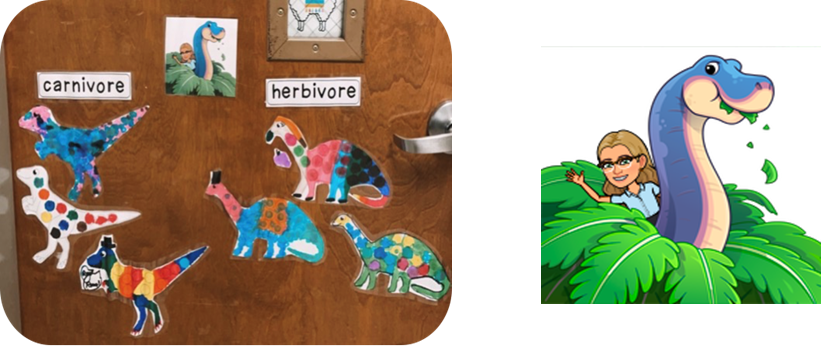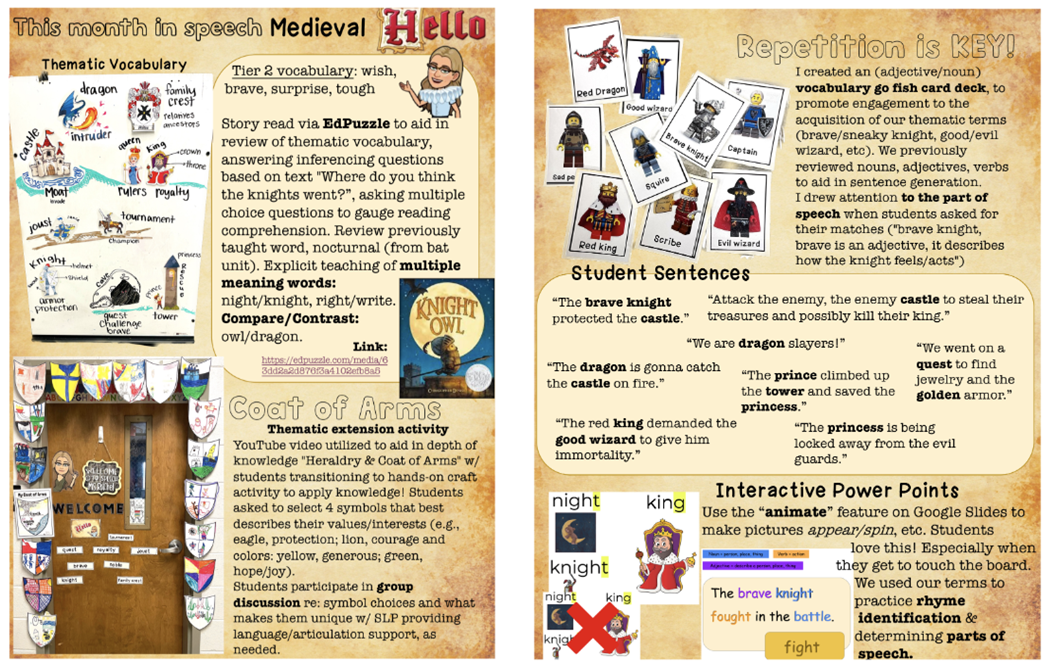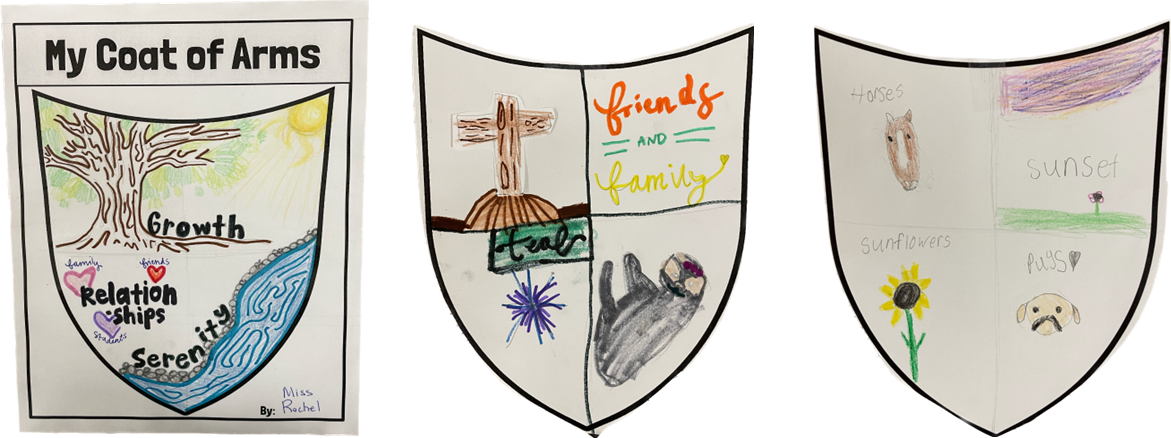
Themed Therapy: A FUNctional Way to Boost Vocabulary Acquisition
Hello, fellow school-based SLPs! Even though I pride myself in being efficient with my time management, as a Clinical Fellow last year, I struggled to find a healthy balance between completing all the tasks necessary to support my caseload. In graduate school, professors would joke that we are “wearers of many hats”, and I have lost count of those hats! If you too have lost count and are feeling weighed down by what seems like a juggling act, keep reading!
Last year as I entered IEP season, I knew I had to figure out a way to maximize my time planning for mixed groups. I started to implement themed sessions. The student feedback blew me away! Attention and motivation to the tasks increased, behaviors decreased, and most importantly I was seeing progress being made! All the while I was taking less time to plan and prep materials. I know what you’re thinking, this sounds too good to be true. Well, my friend, it is not! I have spent the last year perfecting my themed therapy approach and am here to share how you can too!
The Trifecta: Boosting Engagement, Vocabulary, and Phonological Awareness Skills
Implementing a thematic, literacy-based approach has allowed me to focus on building students’ semantic abilities, provide phonological awareness practice (to support literacy skills), and create meaningful experiences! My students come to their sessions eager to see what we will be learning next! By focusing on building rapport and strong therapeutic alliances along with creating a positive, fun learning environment, the speech room is where it is at! Students are proud to come to speech and share with others what we are learning. I incorporate a hands-on craft activity into each theme. After students complete their artwork, I decorate my door with them. The speech room is located in between art and gym. As students are waiting in line, I love catching bits of conversation related to the door. My favorite was hearing a student that is not even on my caseload state, “Look! It’s Ms. Rachel riding a dinosaur!” I then heard one of my students share about what we had been learning (herbivore, carnivore, omnivore). Little did they know, I was smiling from ear to ear on the other side!

Collaborating with Teachers: We’re All in This Together
Setting goals and tracking student progress is at the cornerstone of what we do. It is integral that we do the same for ourselves! As I finished out my CF year, I took time to reflect on the good, the bad, and the ugly. I had already been proactive in setting myself up for success with starting themed therapy. Another area was building relationships with staff and showing my interest in collaborating for the students’ benefit. This is one hat that I do not mind wearing! I am thankful that my school has welcomed my eagerness and new ideas. There tend to be a lot of questions centered around what exactly goes on in the speech room. To show exactly what we have been learning, each month I create a newsletter to reflect our themed vocabulary, book of the month and Tier 2 vocabulary, hands-on activities, and examples of student successes. Here is the newsletter for the month of February.

Themed Therapy: Where to Start?
Behind the Scenes:
Step 1: The hardest part, deciding on a theme. I stretch my themes to last for an entire month. Here are some examples: Sports, Holidays, Seasons, Community Helpers, apples, dinosaurs, medieval, pumpkins/bats.
Step 2: Now that you have a theme, create a list of vocabulary terms you want to target. As many of my students learn best with visual support, I create a visual representation of our vocabulary to boost their understanding. Here is an example of our dinosaur board!

Step 3: I always incorporate a read-aloud with each theme. A great FREE resource is Edpuzzle.com. The website allows for you to embed questions and tasks within the videos! This has helped me keep my head straight with my mixed groups by shifting my focus from remembering what questions to ask and when to facilitating great discussions and tracking data. I pick out Tier 2 vocabulary, create multiple-choice questions to gauge text comprehension and play off of the story's central theme. Here is an example of how I used my dinosaur book of the month, “How do Dinosaurs Play with their Friends?” This book is excellent for targeting phonological awareness skills. We practiced identifying rhyming words & generating additional words. We categorized the dinosaurs’ behaviors as ‘respectful’ & ‘disrespectful’. With a follow-up discussion on how we can be good friends to others.
Edpuzzle Link: How Do Dinosaurs Play With Their Friends? Children's Book Read Aloud
Step 4: Now it's time to decide on a craft! Teachers Pay Teachers has not failed me yet! Completing a craft allows for more drill-based practice and is a great facilitator for allowing students to discuss their drawings. For our dinosaur unit, they selected between a do-a-dot picture of a herbivore, carnivore, or omnivore. Once the dinosaurs were completed, we discussed why we chose that type of dinosaur and described the patterns/colors.

For our medieval unit, the thematic extension activity was creating our own coat of arms. We watched a YouTube video to aid in depth of knowledge. Heraldry and Coat of Arms | Hands-On Education | History for Kids | Symbols for Kids With students then transitioning to our hands-on craft activity to apply their knowledge! Students were asked to select 4 symbols that best described their values/interests. Students participated in a group discussion regarding their symbol choices and what makes them unique.

Step 5: I look for card decks or create my own to aid in supporting vocabulary acquisition while keeping a competitive aspect and BOOSTING engagement and motivation! For our dinosaur unit: I used playdoh and mini dinosaur figurines to create fossils. For my older students, we played a variation of Go fish, Go Dino as well as Dino Match.
For the medieval unit: Go Dino, was such a hit, I opted to make a “Medieval Madness” deck and for extra fun, I used Lego pictures.

Time for Some Themed Fun:
Week 1/2: Introduce the new theme and vocabulary. Gauge what terms they are familiar with and pre-teach the rest. I utilize my smart board by creating slides with our terms. Once I have primed their learning, I also play an introductory video. I urge them to listen for our special words. We end with students sharing about something interesting or new that they learned. For extra practice, they create an exit sentence with one vocabulary word. They are given the option to challenge themselves by using two of our vocabulary words in a sentence!
Week 2/3: I review vocabulary and introduce our book of the month. We take a look at the cover to find our “cover clues.” I have students make predictions on what the story may be about. I also introduce our “special words” aka: Tier 2 vocabulary words! As we listen to the story, I have them use context clues to make predictions about the definitions.
Week 3/4: Now that we have gone over the vocabulary for 2+ weeks, I introduce our craft and take most of my quantitative data points. I wrap up our unit with our game. Not only is this super motivating for the students, it allows me to be more hands off, cueing/prompting as necessary, and focusing on taking data. By being intentional with the vocabulary I select, pictures used, and the type of game I can easily find a way to target everyone’s goals. #success #majorwin
Wrap up:
I hope this post has inspired you to start implementing a themed-therapy approach. Here’s to fewer mornings spent frantically pulling things off the shelf or running off worksheets! Creating a framework for myself has decreased stress, boosted my confidence, and allowed me to put the FUN in functional for targeting my students’ speech and language goals.
Author: Rachel Mathis MS, CCC-SLP
Disclaimer: The information provided in this blog is for general informational purposes only and should not be considered as professional advice. The content is based on the author's personal experiences, research, and opinions. It is always recommended to consult with a qualified professional or expert before making any decisions or taking action based on the information provided in this blog.
